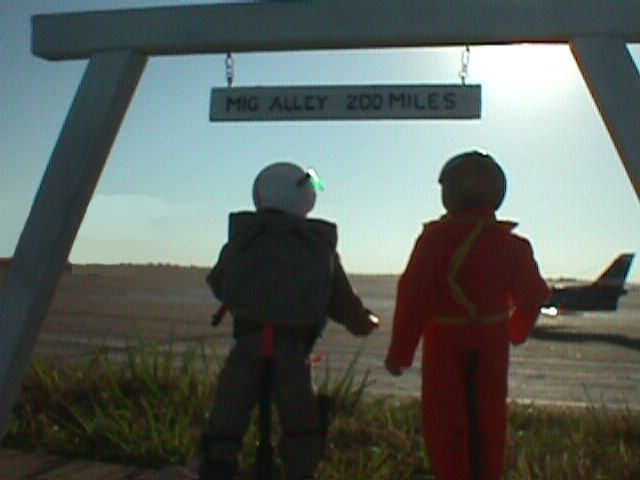


Discovered the news that Northrop-Grumman won the contract to do the replacement to the Tarawa class Amphib. Did a Google search and found images of the LHA-6 U.S.S. America. Also Cdr Salamander's blog that gave more details about the ship than the corporate website (kinda odd I thought).
Any way, it appears the island on the starboard side is at least as long as the other amphibs in the U.S. Navy. From the CGI images, I'm guessing its slightly narrower than before.
The ship is designed to transport 20+ F-35s (if that program doesn't crash and burn!). Also carries V-22 and CH-53 helicopters. With this ship, the well deck is gone-so no hovercraft like the LCACs.
And like Cdr Salamander, this is basically a baby escort carrier for the 21st century. He wrote down the general characteristics of both the LHA-6 and the old Midway class aircraft carrier.
(Quote)
And yes, I could call it a small CV or CVS - it is the right size.
General Characteristics: LHA-6
Displacement:-Approximately 44,971 long tons full load
Length:-------844 feet (257.3 meters)
Beam:---------106 feet (32.3 meters)
Draft:--------23 feet
Propulsion:---Two marine gas turbines, two shafts, 70,000 total brake horsepower, two 5,000 horsepower auxiliary propulsion motors
Speed:--------20+ knots
Crew:---------1,059 (65 officers)
Load:---------1,687 troops (plus 184 surge)
Armament:-----Two RAM launchers; two NATO Sea Sparrow launchers (with Evolved Sea Sparrow Missile (ESSM)); two 20mm Phalanx CIWS mounts; seven twin .50 cal. machine guns
Aircraft:-----A mix of: F-35B Joint Strike Fighters (JSF) STOVL aircraft; MV-22 Osprey VTOL tiltrotors; CH-53E Sea Stallion helicopters; UH-1Y Huey helicopters; AH-1Z Super Cobra helicopters; MH-60S Seahawk helicopters
Just to compare, remember the USS CORAL SEA (CV-43)?
General characteristics: Midway-class aircraft carrier
Displacement:-45,000 tons
Length:-------968 ft (295 m)
Beam: --------113 ft (34 m) waterline
Draft:--------35 ft (11 m)
Propulsion:---Geared steam turbines 212,000 shp
Speed:--------33 knots (61 km/h)
Crew:---------4,104 officers and men
Armament:-----Original armament:
----------------84 × Bofors 40 mm guns,
----------------68 × Oerlikon 20 mm cannon
----------------18 × 5"/54 caliber Mark 16 guns
--------------Refit armament:
----------------16 Sea Sparrow
----------------2 close-in weapons systems
Armor:--------Belt: 7.6 inch
Deck:---------3.5 inch
Aircraft carried: Up to 130 (World War II)
45-55 (1980s)
(end Quote).
He then went off on a side-note about naming the following on ships of this class. I personaly like his choices. But I'm still worried that one of the big Ford class nuclear CVNs may not be named after U.S.S. Enterprise. I'm in fact a bit worried that that name will somehow appear on one of these smaller hulls of the America class.
I have also dug into my archives for the blog postings I did on the U.S.S. Enterprise and on the Japanese Helicopter deck destroyers (i.e. Carriers). Both links are below. But I do want to quote part of that article here:
Currently, the 18,000-ton, 610 foot long, Hyuga (DDH 181) is jointed by sister ship Ise. A third ship of this class is still planned. The next carrier will be longer with a flight deck of 763 feet long. It will weigh in at about 25,000 tons. Currently these ships will operate the SH-60s of which 10 to 11 can be carried by the Hyuga class. Crew size is in the 350 personnel range.
Checking out Wikipedia, DDH-181(Hyuga) and sister DDH-182 (Ise), will be able to operate Harriers and F-35 Lightning IIs when they become operational. The ships will then be equipped with a 12 degree ski-jump.
Smaller carriers-they may be named something else to get the funding needed to get them built, but they are coming no matter what. Anyway, links below.
As an aside, also on the Northrop-Grumman website, was this little bit of news about testing of two Global Hawks doing mid-air refueling! Check out that news release as well!
___
Cdr Salamander blog (http://cdrsalamander.blogspot.com/2008/07/uss-america-returns.html).
Northrop-Grumman website (http://www.northropgrumman.com/) & press release for LHA-6 (http://www.irconnect.com/noc/press/pages/news_releases.html?d=195497).
Two Global Hawk UAVs Will Conduct mid-air refueling oepration test. (http://www.irconnect.com/noc/press/pages/news_releases.html?d=195525).
Link to my post about naming a future carrier U.S.S. Enterprise (http://aerospacedreams.blogspot.com/2009/08/there-shall-always-be-uss-enterprise.html).
This is my post about Japan's Helicopter Destroyer class Ise (http://aerospacedreams.blogspot.com/2009/09/japan-is-gettin-back-into-carriers.html).










+033.jpg)